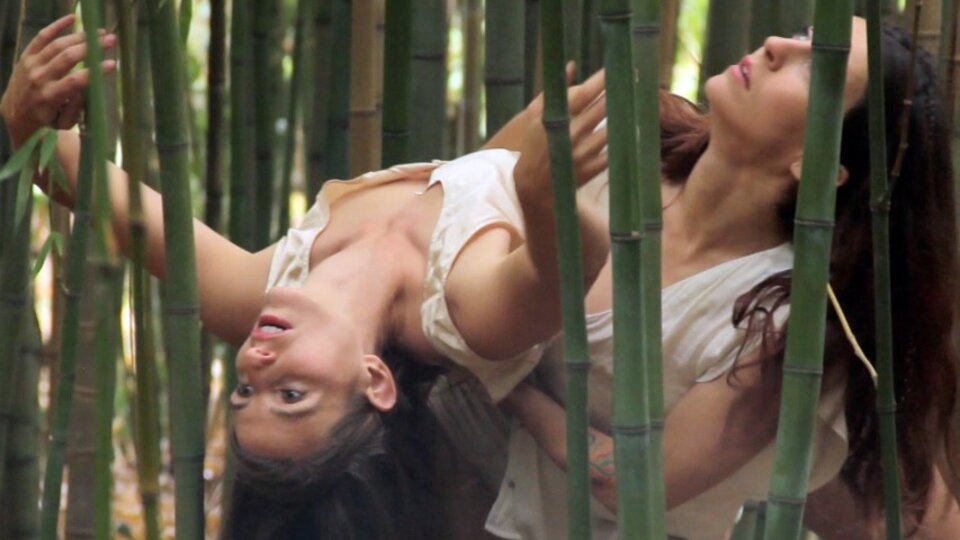Decades ago, Lisandro Olmos, on the outskirts of the city of La Plata, ceased to be an exclusive rural town. In its former hectares of countryside, today you can see streets, institutions and businesses progressing little by little, past the natural space. In this context of urbanization, a historical family field opened its doors to offer its settings for artistic experimentation. Starting in 2021, the “Campo Compo” project invites artists from all disciplines to intervene in its space and discuss creations over a lunch cooked with local products. The results of each meeting will be recorded and shared on YouTube. Today, there are ten editions that have received more than sixty artists from all over the country.
The family project’s Instagram profile reads, “What is Campo Compo?” In front of her, artists who have passed through space respond. “It’s a place of exchange for artists from different disciplines who intervene in the natural environment, then meet for lunch and talk about what they’ve seen,” describes playwright Paula Fanelli. It was a platform for us to experiment with the intersection between dance, movement, science and the environment,” says dancer and CONICET researcher Javier García de Souza. “I discovered in that place that my relationship with theater had opened me up,” says actress Maria Iberlin.
Thus the evidence piles up. Over two years and ten editions, more than sixty artists from all over the country have passed through Campo Campo and premiered thirty new works specifically designed for this rural environment in the province of Buenos Aires. Many of them continued to develop and some won awards in different competitions.
Coordinated by Juan Pablo Pettoruti, Annika Willemsen, Magdalena Pedernera and Jerónimo Perín, the project was born within the academic scope of the National University of La Plata.
Turn the countryside into an art gallery
“The project was born in the Faculty of Arts. I was in a chair full of very active artists, and the discussion always arose about how to get out of the usual fields of art creation, such as the theater or the contemporary art room, that is, limited spaces with a specific audience. Later, I went to the countryside to prepare food and discuss the arts. The idea arose to have,” says Juan Pablo Petoruti, the co-producer of Campo Campo, who coordinated the first meeting at Villa Donesa, this historic field that was previously owned by his family. The foundation of La Plata and the community that is managed today.
“Villa Donesa was born from the typical story of a great-grandfather who came to work with a small piece of land and it grew. Later, the field was divided, but now there is a five-hectare lung belonging to the whole family and managed on a community basis. A place that we decided not to divide, is already a It is a field immersed in the city,” Pettoruti says of the space, which will open every two months from 2021 with the aim of allowing artists from all over the country to create works specially designed for this natural environment.
According to Petoruti, the project was “built without many rules” other than inviting artists to share and experiment in the space. It was time and the natural conditions of Villa Donesa that determined the course of Campo Campo, which was quickly complemented by artistic interventions inspired by its landscape.
A poem of nature
“Almost all the artists who came had never done anything on the field. A thing happens and this space determines an aesthetic, an aesthetic of discomfort. Discomfort usually has a slightly negative view, but it is the result of imposing new, unrestrained parameters on creation,” says the producer, who defines Campo Compo, “an artistic and gastronomic space dedicated to artistic experimentation.”
Development, in this case, occurs as an opening towards a propositional nature. All the interventions at Villa Donesa play and experiment with the natural space as their vector axis. “We’re not proposing a rehearsal space. We don’t have limits in terms of aesthetics, but we’re not proposing it. What we’re suggesting is that people come forward, get to know the space, and experience it as we do,” Pettoruti says of the project’s playful logic.
Thus, Campo Compo produced readings of texts among the lawns, concerts under the trees, artistic interventions among the reeds, and dance scenes that brought to life this nature immersed in the city. Each day ends with a conversation about what has been made while sharing lunch cooking with regional produce that serves as an artistic continuum of interventions. All these encounters are recorded on three cameras and shared for free on YouTube. In this way, interventions can be observed with subsequent conversations that foster the creative process.
“In terms of production, Combo Combo is audiovisual. We don’t have a lot of visitors on site because we take people ourselves, and the field where we do it is a very big place that requires quite a bit of logistics. Although the public is starting to open up a bit more this year, it’s still small. This For reason, we focus more on creating quality audiovisual materials,” says Pettoruti about the purpose of his project. In this sense, the organizers, although they recognize “some uncertainty in their future”, open to the public and place themselves more in the social and cultural life of Lisandro Olmos, which grows together with its population. Their desire is to find funding that allows them to enter .., between urban and rural areas.

